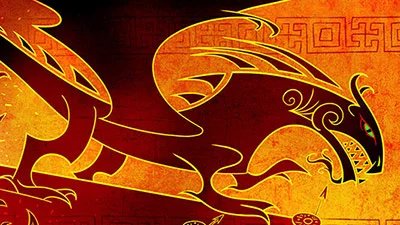5. Faded
Learn more about the Seven F’s of Dinosaurs!
The flood is over. The world has changed. The animals that were preserved on the ark have begun to spread out across the globe. Dinosaurs are beginning to spread throughout the newly formed continents. So why don’t we see dinosaurs mentioned throughout history? Why don’t we see dinosaurs today? Where did they go? These are all very good questions. Unfortunately, there is no one good answer. Let’s take a closer look to see why these amazing and unique reptiles faded from the pages of history.

Firstly, why don’t we see dinosaurs mentioned throughout history? The answer to this question is actually very simple. It’s the same reason we don’t see the words dishwasher or bicycle. These words didn’t exist until recently. The same is true for the word dinosaur. It was invented in 1841 by a British anatomist named Sir Richard Owen. Before this, these animals and their bones were referred to as dragons and dragon bones. The word dragon is a general term that could refer to any reptile: lizards like the Komodo dragon, flying reptiles like Pteranodon, and even dinosaurs. There are many legends and tales from around the world that depict dinosaur-like creatures, but they are called dragons. The word dragon even appears in the Bible. Malachi 1:3 reads, “I hated Esau and laid his heritage waste for the dragons of the wilderness.” Since God’s Word is true, we know that dragons are real animals.

Photo taken at the Creation Museum
Dinosaurs and Humans
The answer to the second question is rather simple. Why don’t we see dinosaurs today? They’re extinct. As far as we know, no representative of any dinosaur kind remains alive today.

Artist Rendering of Parasaurolophus
Lastly, where did they go? The answer to this question is complicated. No single cause is to blame for the demise of these ancient reptiles. After the flood, the world was completely different. Some plants that were once bountiful were gone, so the herbivorous dinosaurs may not have had access to their usual food. Another possibility is that they were out-competed for food and resources by other animals. Some dinosaurs were likely hunted by humans, either for food or sport or even out of fear. For instance, if we read historical records that involve dragons, most of the time, the dragon dies in the end. If these dragons were indeed dinosaurs, this would significantly reduce their population. Also, reptiles tend to have a harder time adapting to change. So, it’s possible that with the changed climate as a result of the flood, some dinosaurs were not able to adapt to the changing conditions.
In short, we don’t know exactly what happened to these awe-inspiring animals. But what we do know is that they undeniably reflect the glory of their maker!
Watch Dinosaurs & Dragon Legends from the Creation Museum Collection.
- © 2025 Answers in Genesis
- Privacy Policy
- Contact
- About
